Altamura, located in the heart of Puglia, is a city that offers a unique combination of history, culture and gastronomy. Known mainly for its famous Altamura bread, the city has much more to offer. In this article we will explore the main attractions of Altamura, guiding you through an itinerary you cannot miss.
La Altamura Cathedraldedicated to the Assumption, is one of the main symbols of the city and a magnificent example of Apulian Romanesque architecture. Its construction dates back to the 13th century, a historical period when Frederick II of Swabia ruled these lands. It was the emperor himself who wanted this cathedral to be built, destined to become a spiritual and cultural reference point for the entire region. The building stands in the heart of the historic centrean area that was already teeming with commercial and social activities at the time, making the cathedral not only a place of worship, but also a symbol of community cohesion.
The façade of the cathedral is decorated with intricate sculptural detailswhich testify to the craftsmanship of medieval artisans. The sculptures adorning the façade depict biblical scenes, sacred characters and plant motifs, creating a perfect marriage of art and spirituality. Upon entering, one finds oneself immersed in a solemn environment, characterised by wide naves and vaulted ceilings, where every architectural element is designed to enhance the majesty of the place.
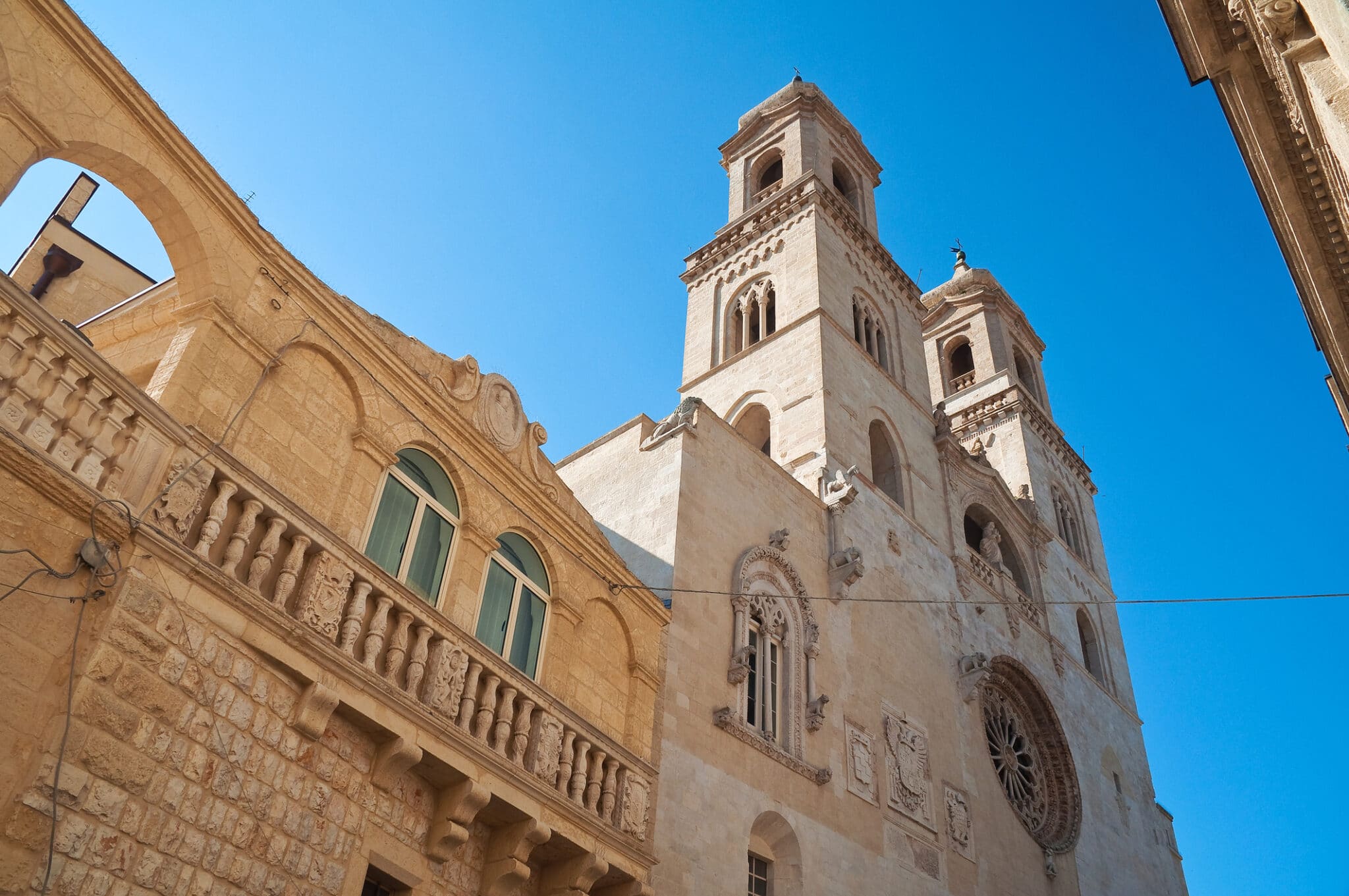
Inside the cathedral are kept numerous artistic treasures. These include Baroque altars, richly decorated side chapels and works of sacred art, including paintings and sculptures of great historical and artistic value. Every corner of the cathedral tells a story, offering visitors a journey through centuries of faith and devotion.
Don't miss the opportunity to climbing the bell tower of the cathedral. This tower offers a unique panoramic view of the city of Altamura and its surroundings. From the top, you can admire the medieval urban fabric, with its narrow streets and historic buildings, and the beautiful landscape of the Murgia, with its hills and cultivated fields. The climb, although it may seem challenging, is amply rewarded by the beauty of the view from the top.
Altamura is world famous for the discovery of theMan from Altamuraan extraordinarily well-preserved Neanderthal skeleton found in the Cave of Lamalunga. This discovery, which took place in the 1990s, has aroused great interest in the international scientific community, offering new information on the life and habits of Neanderthals. The Altamura Man, with his exceptionally well-preserved state, represents a fundamental piece for understanding the prehistory of mankind.
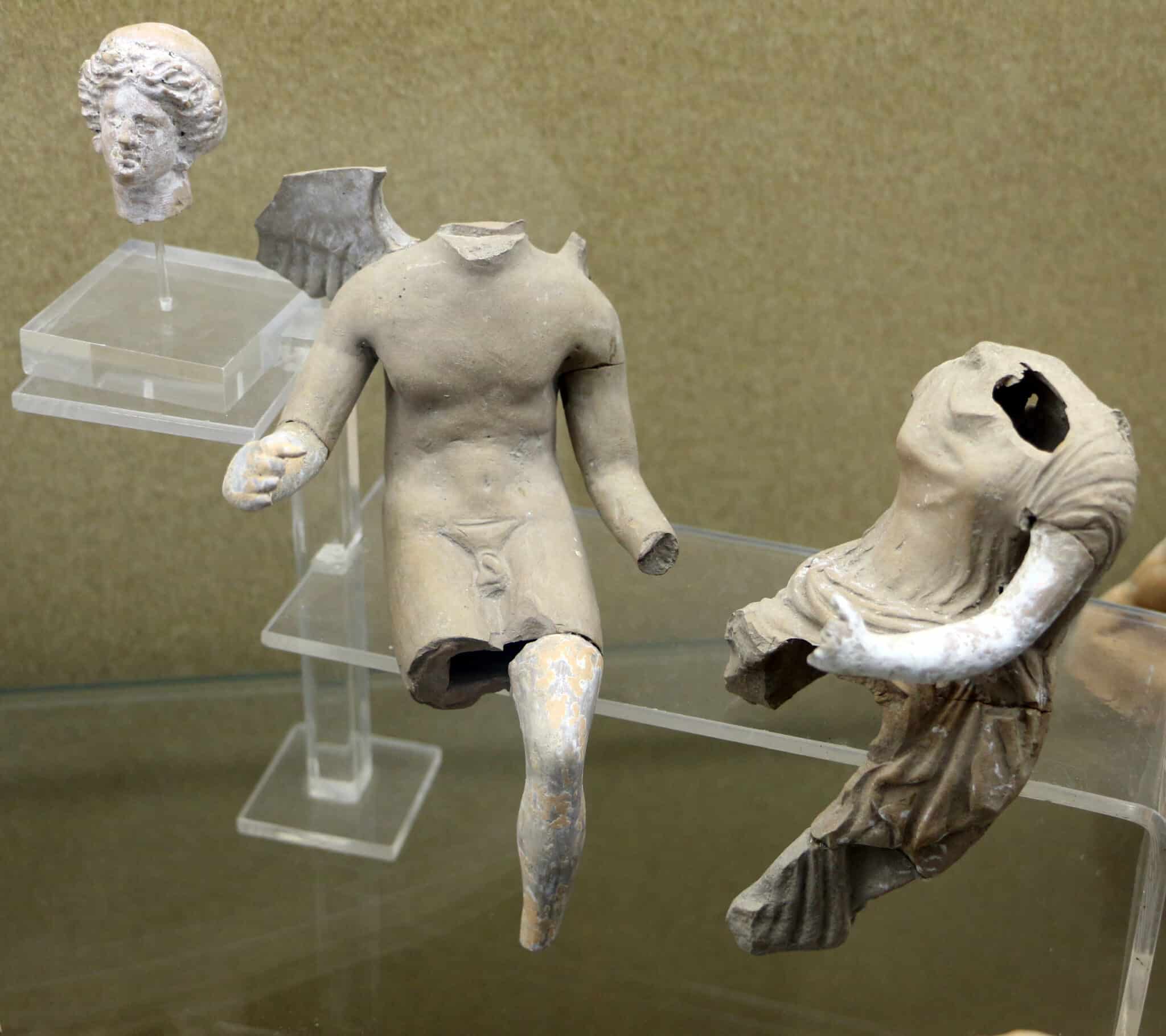
The National Archaeological Museum of Altamura houses a large collection of exhibits covering a very broad historical period, from prehistoric times to Roman times. The museum rooms are laid out in such a way as to offer a chronological and thematic itinerary, allowing visitors to fully immerse themselves in the history of the area. Among the most important exhibits, in addition to the skeleton of the Altamura Man, are stone tools, ceramics, jewellery and objects of everyday use, which bear witness to the life of the ancient peoples who inhabited this region.
The museum is not only a place of preservation, but also an educational and interactive space. Exhibits are accompanied by information panels, three-dimensional reconstructions and multimedia aids that make the visit even more engaging. It is possible to participate in educational workshops and guided tours that allow visitors to learn more about prehistory and archaeology. This approach makes the museum an ideal destination for families, schools and enthusiasts of ancient history.
I clusters of Altamura are one of the most characteristic elements of the city's historic centre. These small inner courtyards, typical of medieval dwellings, were originally used as common spaces for the families that lived there. Their function was twofold: on the one hand, they served as places of work and daily life; on the other, they were socialisation and meeting points for the inhabitants of the neighbourhood. Each cloister has its own history and peculiarities, which make it unique.
Strolling through the narrow streets of the historic centre, one comes across numerous clusterseach with its own charm and history. Some are simple and functional, others are enriched by floral decorations and architectural details that testify to the skill of local craftsmen. Among the most striking cloisters, special mention must be made of the Tricarico Claustrowhich stands out for its beauty and state of preservation. This cloister is a real hidden gem, where it is possible to breathe in the authentic atmosphere of Altamura in the past.
Today, Altamura's cloisters continue to be places of life and socialisation. Many of them are inhabited by families who keep alive the traditions of the past, creating a profound link between history and modernity. During the visit, it is possible to meet the inhabitants of the neighbourhood, who will be happy to tell stories and anecdotes related to their cloisters. This makes the visit an authentic and engaging experience that goes beyond simply observing the historical monuments. Don't miss the chance to explore these hidden corners and discover the beating heart of Altamura.
No visit to Altamura would be complete without tasting the famous Altamura breada product with a long tradition and a deep connection to the land. This bread, known and appreciated all over the world, is made with durum wheat semolina locally grown, an ingredient that gives it a unique flavour and texture. Its history dates back centuries, when the peasants of the Murgia region prepared it to have a food that would keep for a long time during the hard days of work in the fields. Still today, Altamura bread is made following traditional methods, handed down from generation to generation, which guarantee its quality and authenticity.
Altamura bread is renowned for its crispy crust and the soft and tasty crumbcharacteristics that distinguish it from other types of bread. Its production begins with the selection of the best durum wheat, which is ground to obtain a high-quality semolina. The dough is then prepared with water, sourdough and salt, and left to rise slowly for several hours. This long and natural rising process is essential to develop the bread's characteristic flavour. Finally, the bread is baked in wood-fired ovenswhich give the crust its golden colour and unmistakable fragrance. The result is a bread that not only satisfies the palate, but also tells a story of tradition and passion for quality.
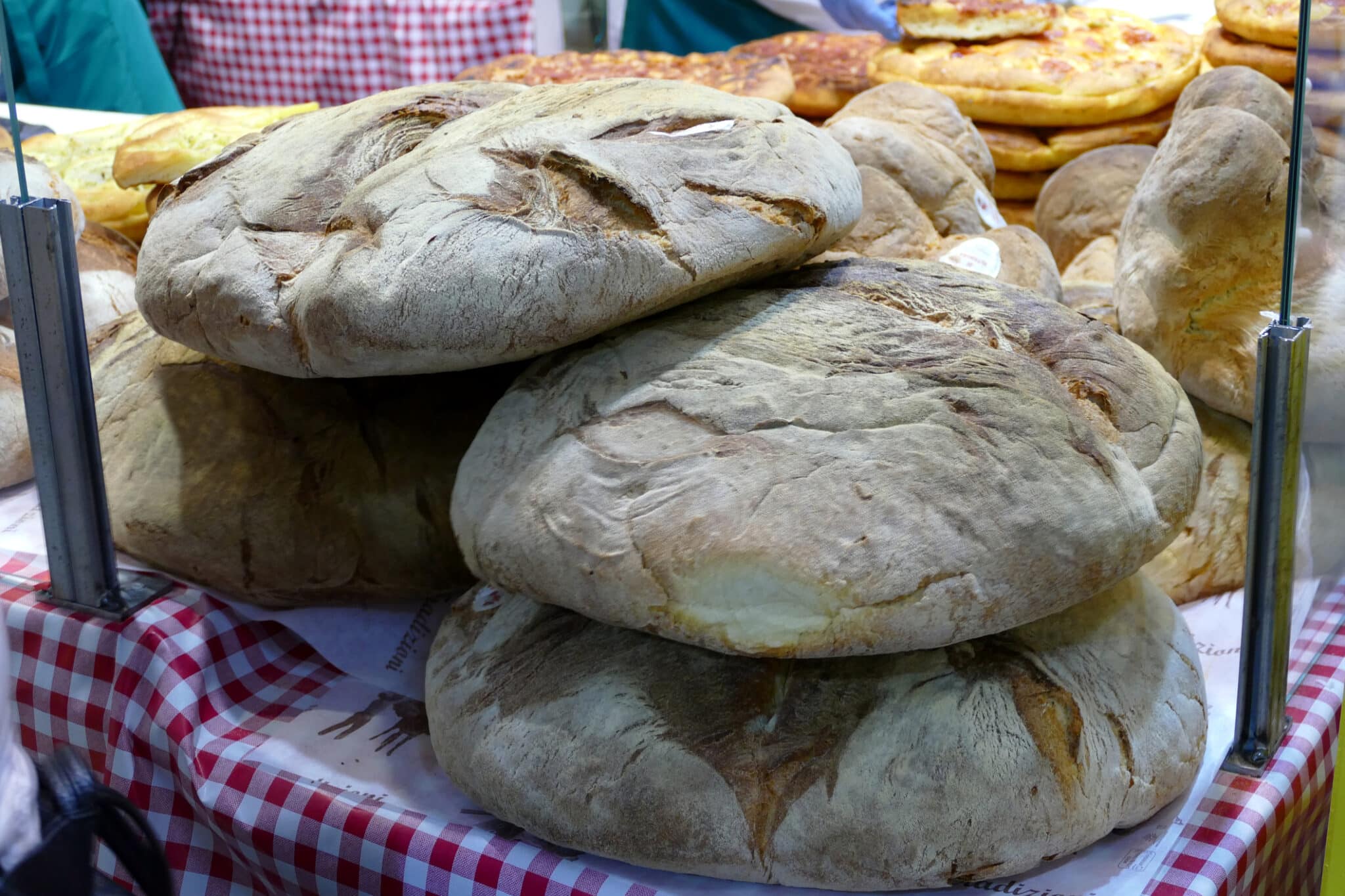
To fully experience the Altamura bread, it is essential to visit a local bakery. Here, you can observe the production process up close and, above all, enjoy freshly baked bread while it is still warm and fragrant. Many bakeries also offer the possibility of purchasing other typical products, such as focaccia and biscuits, made with the same care and dedication. Find out more on this treasure of Apulian tradition in our article on the Altamura bread.
A few kilometres from the city centre is the Pulo of Altamuraone of the most impressive karstic dolines in Apulia. This huge natural crater, with a diameter of about 500 metres and a depth of 75 metres, is the result of millennia of erosion and geological activity. The doline is surrounded by a dense vegetationwhich creates a striking contrast with the rocky walls and limestone terrain. Its formation was influenced by the action of underground waters that slowly melted the limestone to create this spectacular natural scenery. The Pulo is a place of great scientific, geological and natural interest, attracting scholars and enthusiasts from all over the world.
The Pulo di Altamura offers numerous opportunities for excursions and outdoor activities. The paths winding around the doline allow you to explore the rich biodiversity of the area, observing rare plants and wildlife in their natural habitat. Photography enthusiasts will find the Pulo an ideal subject to capture spectacular images, thanks to the play of light and shadow created by the rock formations and vegetation. It is also possible to participate in guided tours, which offer detailed explanations of the geology and history of the site. Take a camera with you to immortalise the beauty of this unique place.
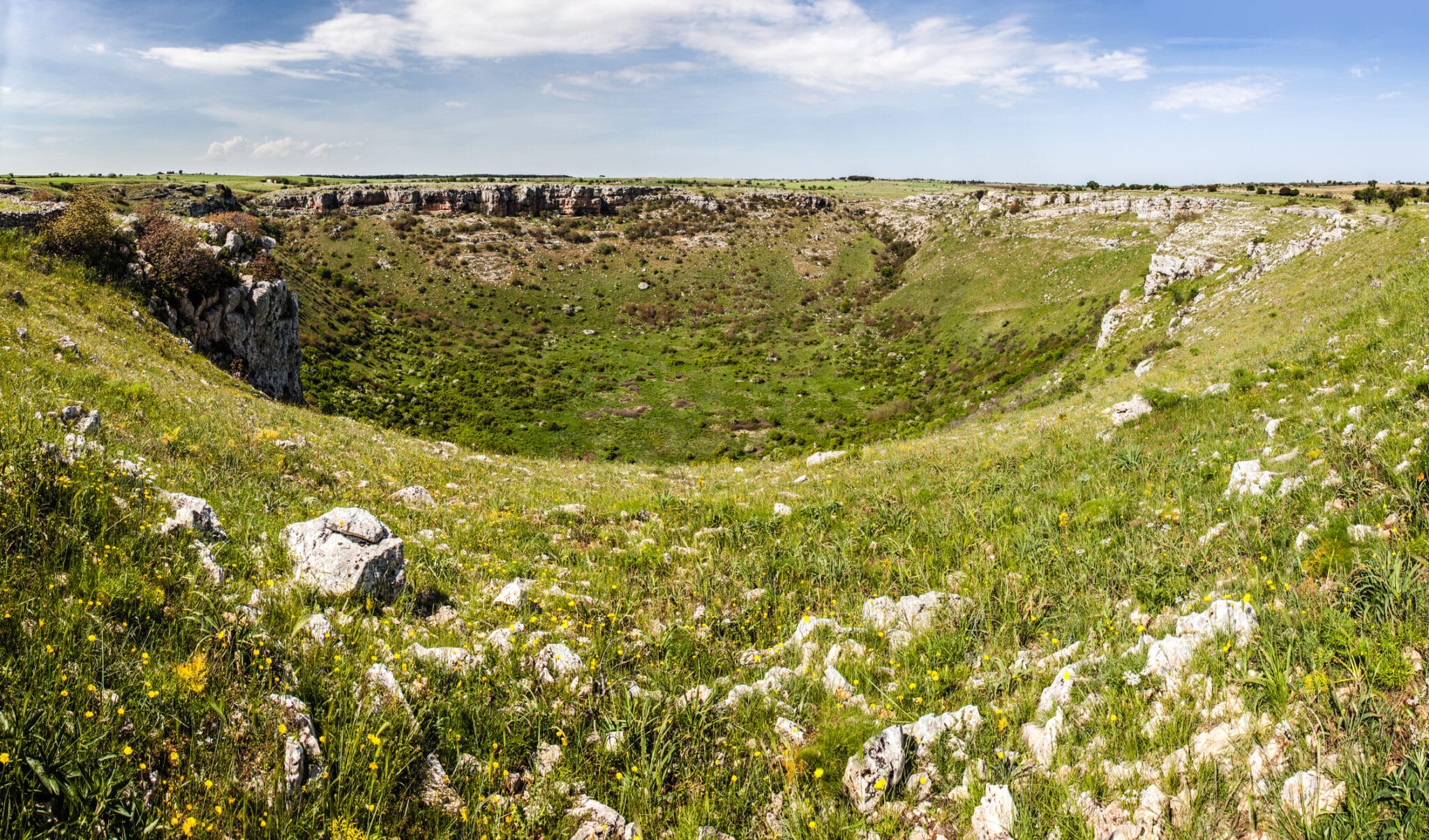
The conservation of the Pulo di Altamura is a priority for local authorities and environmental organisations. Numerous projects have been initiated to protect this fragile ecosystem and to enhance the site through educational and sustainable tourism activities. The Pulo is also an important landmark for the local community, which considers it a symbol of the deep connection between man and nature. Visiting the Pulo di Altamura means not only admiring a natural masterpiece, but also supporting efforts to conserve and enhance the area.
La Church of St Nicholas of the Greeks is one of Altamura's most fascinating buildings of worship, located in the heart of the historic centre. Built in the 13th century, this church represents a perfect example of religious syncretismcombining Christian and Byzantine architectural and decorative elements. Its construction dates back to a period of great cultural and religious ferment, during which Altamura was a crossroads of different influences. The architecture of the church reflects this mixture of styles, with a simple but solemn structure, enriched by artistic details that reveal the skill of the craftsmen of the time.
Inside the Church of St Nicholas of the Greeks, visitors can admire frescoes and mosaics of great historical and artistic value. The walls of the church are decorated with frescoes depicting biblical scenes and saints, created using a technique that combines Byzantine and Western art. The mosaics, with their vivid colours and intricate details, are an outstanding example of medieval mosaic art. Each decorative element tells a story, offering a window into the past and the religious traditions of the local community. Don't miss the chance to explore its interior rich in history and artistic beauty.
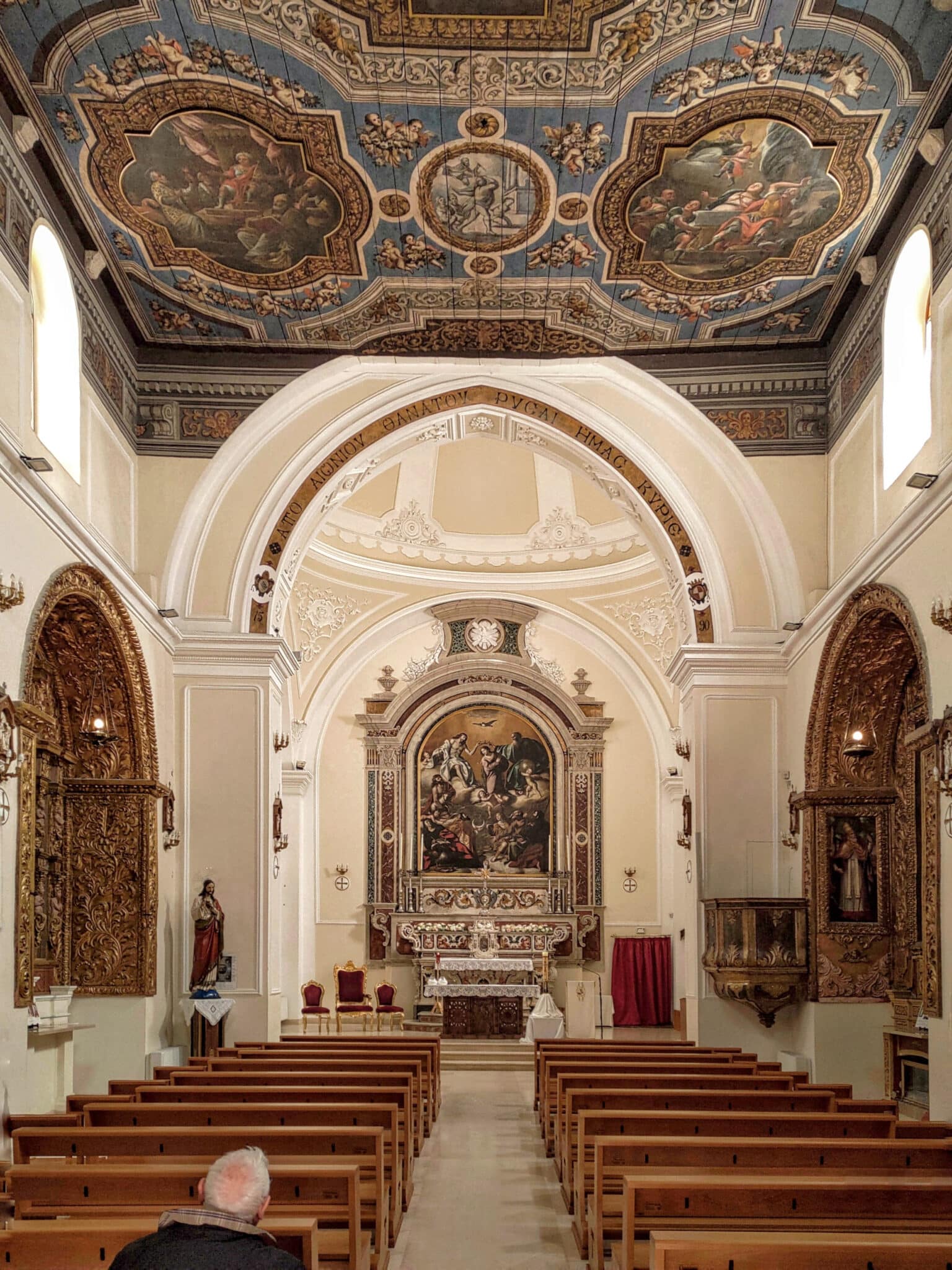
In addition to its artistic and historical value, the Church of San Nicola dei Greci is also an important place of worship for the Altamura community. The church continues to be a spiritual reference point, where the faithful gather for liturgical celebrations and moments of prayer and reflection. Its quiet and solemn atmosphere offers an ideal place to retreat from the daily hustle and bustle and find a sense of inner peace. To visit this church is to immerse oneself in an environment steeped in spirituality and history, where past and present merge into a harmonious whole.
To complete your visit to Altamura, you cannot miss the Lamalunga Visitor Centrea place dedicated to the discovery and understanding of theMan from Altamura. This find, an extraordinarily well-preserved Neanderthal, was discovered in 1993 in the Lamalunga Cave, located a few kilometres from the city centre. The discovery represented a milestone for palaeoanthropology, providing valuable information on the life of Neanderthals. The visitor centre was set up to highlight this important discovery and to enable visitors to learn more about this fascinating chapter of prehistory.
The Lamalunga Visitor Centre offers a comprehensive educational experience thanks to interactive and informative exhibits illustrating the life of the Neanderthals and how the Altamura Man was discovered. The exhibition rooms are equipped with information panels, dioramas and three-dimensional reproductions that recreate the environment in which the Neanderthals lived. One of the main attractions is the faithful reproduction of the skeleton of the Man of Altamuraaccompanied by detailed explanations of its physical characteristics and the techniques used to study it. In addition, the centre offers films and documentaries that tell the story of the discovery and research conducted on the Lamalunga site.
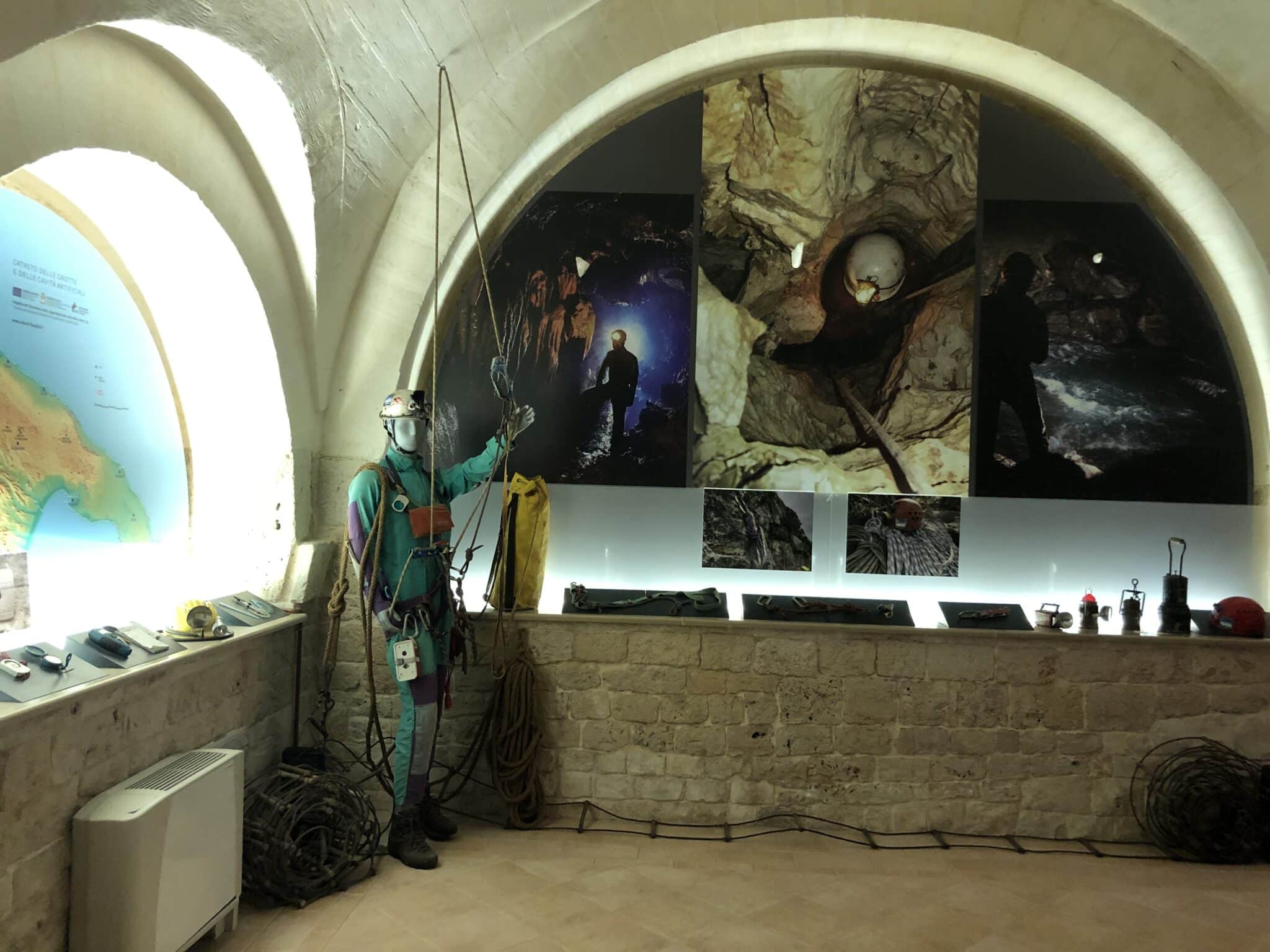
The Lamalunga Visitor Centre is designed to be a place of learning suitable for all ages. Educational activities offerings include educational workshops, guided tours and interactive routes that deepen knowledge about prehistory and archaeology. Children can participate in games and activities that directly involve them, making the visit a fun and educational experience. For adults, lectures and workshops offer the opportunity to learn more about specific topics related to palaeoanthropology and Neanderthal history. This combination of activities makes the Lamalunga Visitor Centre an unmissable destination for anyone wishing to enrich their visit to Altamura with a journey into the distant past.
Altamura is a city that surprises for its cultural and historical richness. Every corner of this fascinating Apulian town tells a different story, ready to be discovered by those with the curiosity and desire to explore. From its ancient churches and monuments to archaeological treasures such as the Man of Altamura, each visit offers the opportunity to immerse oneself in a unique and varied heritage. Don't miss the opportunity to visit Altamurato stroll through its streets rich in history, to admire its splendid views and to discover its authentic and welcoming soul.
And, of course, don't forget to taste the famous Altamura bread! This typical product, with its crunchy crust and soft, tasty crumb, is a true symbol of Apulian culinary tradition. Be sure to visit a local bakery to taste the freshly baked bread and to discover the stories and techniques that make this bread so special. Altamura awaits you with its wonders historical, natural and gastronomic, ready to give you an unforgettable experience.
We are a young Web Agency with more than 10 years of experience, we love travelling and discovering new places, that is why we write every day on Italia Delight our travel site.

Italia Delight is your definitive guide to Italian restaurants, offering a comprehensive directory and web marketing services to enhance every dining experience. Discover, taste and connect with Italian tradition.
To provide the best experiences, we and our partners use technologies like cookies to store and/or access device information. Consenting to these technologies will allow us and our partners to process personal data such as browsing behavior or unique IDs on this site and show (non-) personalized ads. Not consenting or withdrawing consent, may adversely affect certain features and functions.
Click below to consent to the above or make granular choices. Your choices will be applied to this site only. You can change your settings at any time, including withdrawing your consent, by using the toggles on the Cookie Policy, or by clicking on the manage consent button at the bottom of the screen.